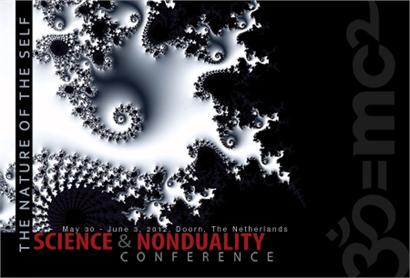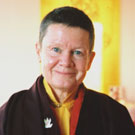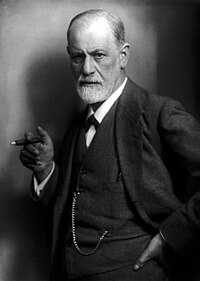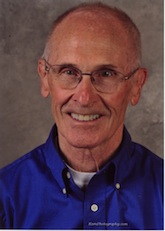In this important article,
NY Times editorial columnist David Brooks discusses research demonstrating that early childhood experiences has lasting impact on people, especially when those experiences are negative. He mentions this research (including the
adverse childhood experience [ACE] study of Felitti and Anda from the 1990s, and Paul Tough’s new book,
How Children Succeed: Grit, Curiosity, and the Hidden Power of Character) as evidence of a shift toward the psychologizing of domestic policy.
Brooks is a conservative, so to a certain extent this research supports the conservative belief that character is more important than environment. For example,
In the past several decades, policy makers have focused
on the material and bureaucratic things that correlate to school
failure, like poor neighborhoods, bad nutrition, schools that are too
big or too small. But, more recently, attention has shifted to the
psychological reactions that impede learning — the ones that flow from
insecure relationships, constant movement and economic anxiety.
There is a shift evident in Brooks' column, however, and it's an important one. Character is no longer seen as essentially innate - it is now recognized to develop within the interpersonal, social, and economic context of the child.
The
ACE Score that Brooks mentions looks at 10 adverse experiences - including verbal/emotional abuse, physical abuse, sexual abuse, lack of adequate food/clothing/shelter, lack of emotional support/trust, parental chemical addiction, divorce/separation, physical/verbal abuse of mother, addiction in a family member, mental illness in family, or family member in jail/prison. The higher the score for the child (1-10), the greater the risk for learning disorders, affect regulation issues, behavioral problems, mental illness, criminal behavior, and so on.
Over at the ACE Study site, they applaud the use of their research by Brooks, but
they would like to have seen more perspective on how these experiences shape lives (which Brooks addresses a bit in his book,
The Social Animal):
There’s much more to this than psychological barriers. I wish he’d
added this information to why childhood trauma has such tragic long-term
consequences:
Toxic stress physically damages a child’s developing brain. This was determined by a group of neuroscientists and pediatricians, including neuroscientist Martin Teicher and pediatrician Jack Shonkoff, both at Harvard University, neuroscientist Bruce McEwen at Rockefeller University, and pediatrician Bruce Perry at the Child Trauma Academy.
So children with toxic stress have trouble focusing in school,
developing healthy relationships with their peers and trusting
authority. They cope with their high anxiety, depression, and fear by
turning to biochemical coping strategies — e.g., alcohol, tobacco
(nicotine relieves anxiety), methamphetamine (now illegal, but it was
the first prescription anti-depressant), food, and even work. Addictions
to these lead to emphysema, lung cancer, diabetes, heart disease,
stroke, autoimmune diseases, etc.
Other research is revealing how stress hormones produce systemic
inflammation through the body that lay down the foundation for later
disease.
There's
more to read at their site.
If we can begin to incorporate this information into how we plan education and other realms of our domestic agenda, then we will have taken a huge leap forward in reducing crime, mental illness, and other social issues.
By DAVID BROOKS
Published: September 27, 2012
In the 1990s, Vincent Felitti and Robert Anda conducted a study on
adverse childhood experiences. They asked 17,000 mostly white, mostly
upscale patients enrolled in a Kaiser H.M.O. to describe whether they
had experienced any of 10 categories of childhood trauma. They asked
them if they had been abused, if their parents had divorced, if family
members had been incarcerated or declared mentally ill. Then they gave
them what came to be known as ACE scores, depending on how many of the
10 experiences they had endured.
The link between childhood trauma and adult outcomes was striking.
People with an ACE score of 4 were seven times more likely to be
alcoholics as adults than people with an ACE score of 0. They were six
times more likely to have had sex before age 15, twice as likely to be
diagnosed with cancer, four times as likely to suffer emphysema. People
with an ACE score above 6 were 30 times more likely to have attempted
suicide.
Later research suggested that only 3 percent of students with an ACE
score of 0 had learning or behavioral problems in school. Among students
with an ACE score of 4 or higher, 51 percent had those problems.
In Paul Tough’s essential book, “How Children Succeed,” he describes
what’s going on. Childhood stress can have long lasting neural effects,
making it harder to exercise self-control, focus attention, delay
gratification and do many of the other things that contribute to a happy
life.
Tough interviewed a young lady named Monisha, who was pulled out of
class by a social worker, taken to a strange foster home and forbidden
from seeing her father for months. “I remember the first day like it was
yesterday. Every detail. I still have dreams about it. I feel like I’m
going to be damaged forever.”
Monisha’s anxiety sensors are still going full blast. “If a plane flies
over me, I think they’re going to drop a bomb. I think about my dad
dying,” she told Tough. “When I get scared, I start shaking. My heart
starts beating. I start sweating. You know how people say ‘I was scared
to death’? I get scared that that’s really going to happen to me one
day.”
Tough’s book is part of what you might call the psychologizing of
domestic policy. In the past several decades, policy makers have focused
on the material and bureaucratic things that correlate to school
failure, like poor neighborhoods, bad nutrition, schools that are too
big or too small. But, more recently, attention has shifted to the
psychological reactions that impede learning — the ones that flow from
insecure relationships, constant movement and economic anxiety.
Attention has shifted toward the psychological for several reasons.
First, it’s become increasingly clear that social and emotional deficits
can trump material or even intellectual progress. Schools in the
Knowledge Is Power Program, or KIPP, are among the best college prep
academies for disadvantaged kids. But, in its first survey a few years
ago, KIPP discovered that three-quarters of its graduates were not
making it through college. It wasn’t the students with the lower high
school grades that were dropping out most. It was the ones with the
weakest resilience and social skills. It was the pessimists.
Second, over the past few years, an array of psychological researchers
have taught us that motivation, self-control and resilience are together
as important as raw I.Q. and are probably more malleable.
Finally, pop culture has been far out front of policy makers in showing
how social dysfunction can ruin lives. You can turn on an episode of
“Here Comes Honey Boo Boo,” about a train wreck working-class family.
You can turn on “Alaska State Troopers” and see trailer parks filled
with drugged-up basket cases. You can listen to rappers like Tyler, The
Creator whose songs are angry howls from fatherless men.
Schools are now casting about, trying to find psychological programs
that will help students work on resilience, equanimity and self-control.
Some schools give two sets of grades — one for academic work and one
for deportment.
And it’s not just schools that are veering deeper into the psychological
realms. Health care systems are going the same way, tracing obesity and
self-destructive habits back to social breakdown and stress.
When you look over the domestic policy landscape, you see all these
different people in different policy silos with different budgets: in
health care, education, crime, poverty, social mobility and labor force
issues. But, in their disjointed ways, they are all dealing with the
same problem — that across vast stretches of America, economic, social
and family breakdowns are producing enormous amounts of stress and
unregulated behavior, which dulls motivation, undermines self-control
and distorts lives.
Maybe it’s time for people in all these different fields to get together
in a room and make a concerted push against the psychological barriers
to success.













